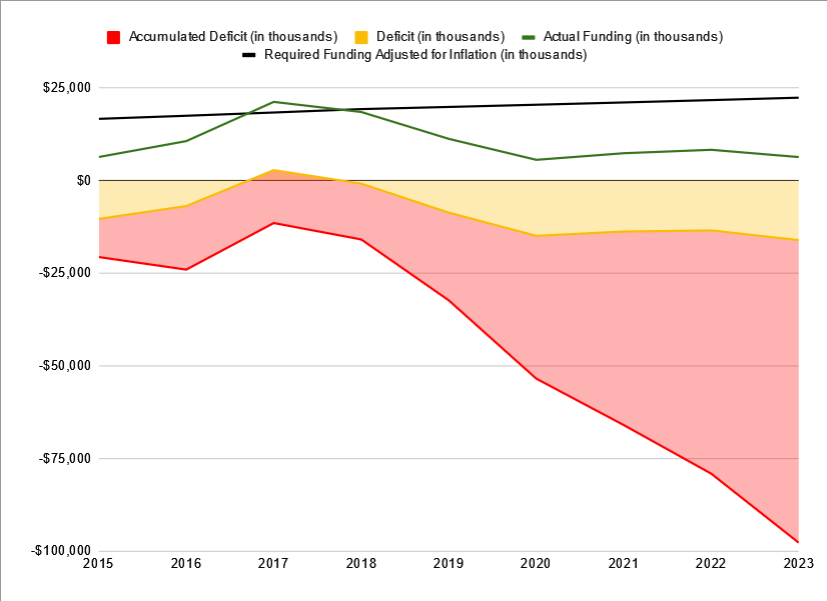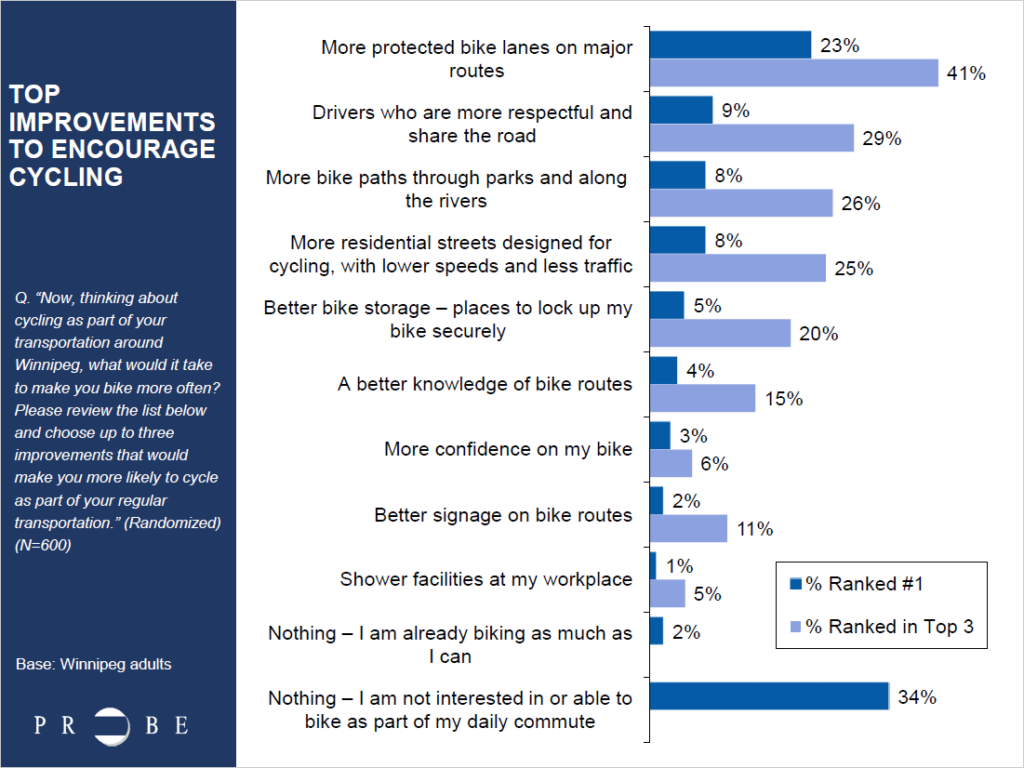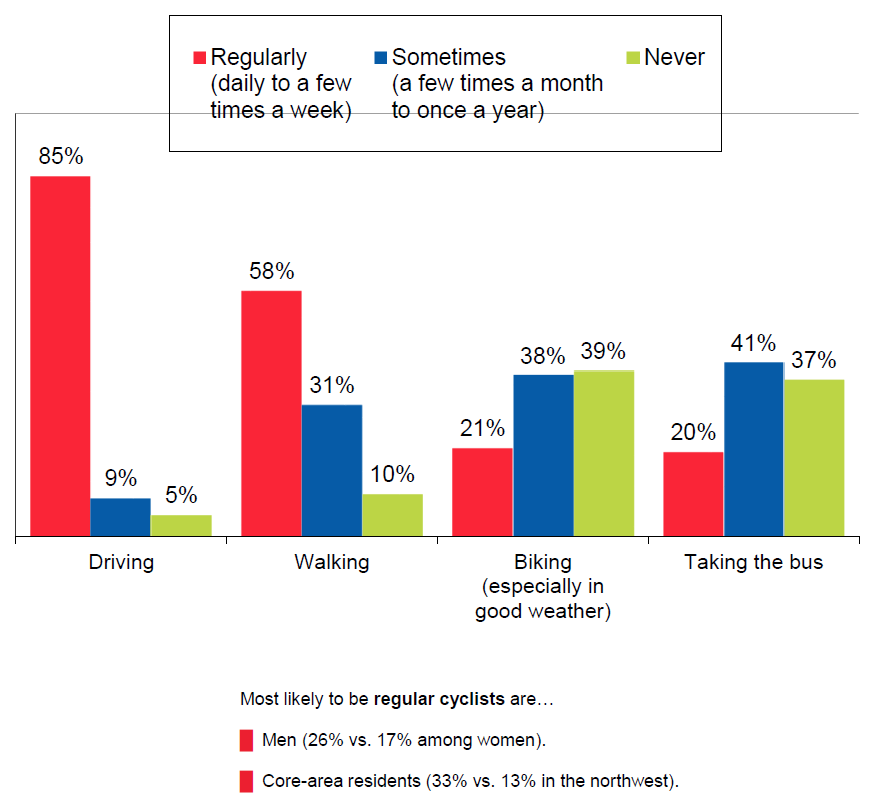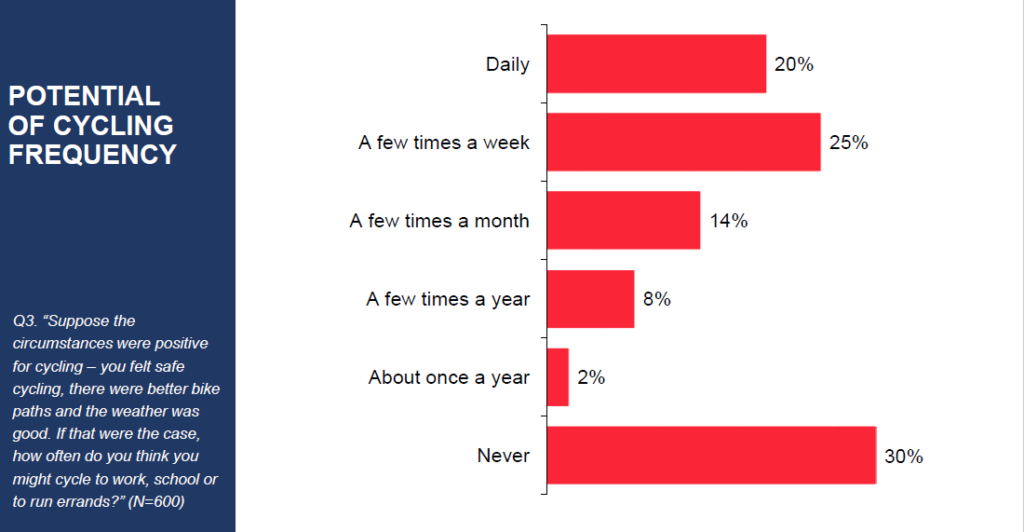On Tuesday, October 12th, Councillors Matt Allard and Cindy Gilroy will put forward three budget motions at the city’s Infrastructure Renewals and Public Works Committee that, if passed, would greatly accelerate the development of Winnipeg’s cycling network. These motions acknowledge the urgency of the climate crisis, and provide measures to start reducing the 50% of greenhouse gas emissions generated by transportation in Winnipeg by accelerating development of the city’s Pedestrian and Cycling networks. Passage of these motions would:
- Require that new active transportation funding equal to 10% of the projected total road renewals budget (projected to grow by more than $10 million to $162 million in 2022) be referred to the 2022 Budget Review Process and the six-year capital forecast (Item No. 19).
- Update inclusion/prioritization criteria for the road renewals program to require walking and cycling improvements to be included in more road renewal projects to accelerate development of the pedestrian and cycling networks (Item No. 20);
- Require the Transportation Master Plan (currently being reviewed/updated) to include provisions that by 2030 at least 50% of all trips taken in the city should be taken by foot, bike, bus, or as a passenger (Item No. 21).
Call to Action
Councillors Allard and Gilroy need our support to get these AT-friendly budget motions passed.
Please help get these motions passed by:
- Contacting your City Councillor to let them know that you support adoption of these motions;
- Ask your Councillor to appear before the committee in favour of these motions, or to at least send a letter to the committee in support of these motions.
- Ask your Councillor to appear before the committee in favour of these motions, or to at least send a letter to the committee in support of these motions.
- Contacting Mayor Bowman to let him know that you support adoption of these motions;
- Submitting a letter of support for the motions to the Standing Policy Committee on Infrastructure Renewal and Public Works, meeting on Tuesday, October 12th at 9:30 am
- You must submit your letter of support by 4:30 pm on Friday, October 8th for it to be included in the proceedings of the committee.
- Letters can be sent to CityClerks@winnipeg.ca
- Reference agenda items 19, 20, and 21.
- Feel free to borrow from our text, or to write in your own words. The more you can personalize things, the better.
- Be positive and constructive.
- Please note that all submissions / presentations become part of the public record and are published in the Committee Minutes.
- Register to speak before the committee with respect to these motions. You must register by 4:30 pm on Friday.
- Requests to speak before the committee should be sent to CityClerks@winnipeg.ca
- Reference agenda items 19, 20, and 21.
- Delegations are permitted to appear before the Committee via zoom, or in person. As there are capacity limits in place for the building, anyone wishing to attend in person must notify the Clerk by 4:30 p.m. the day prior to the meeting. All individuals entering City-operated facilities, including City Hall, are required to wear a non-medical face mask.
- Screen sharing is permitted only if you have submitted a copy of your presentation prior to 4:30 the day before the meeting. This option will be disabled if the documents have not been provided within that time frame.
- If you have a written submission, it must be emailed to the Clerk no later than 4:30 p.m. the day prior to the meeting.
- Please note that all submissions / presentations become part of the public record and are published in the Committee Minutes.
- All delegations must maintain order and decorum and are not permitted to display signs or placards, to applaud participants in debate or to engage in conversation or any other behaviour which may disrupt the meeting.
Background on the Need for these Budget Motions
Winnipeg’s Climate Action Plan: Planning for Climate Change, Acting for People received unanimous support from Council on September 20, 2018, was changed this year to increase targets to match national targets, so Councillors are committed to reducing our community greenhouse gas emissions. That commitment to take action on climate change needs to be matched in the budget, but current budget projections fall far short of that commitment.
Adoption of the city’s Pedestrian and Cycling Strategies in 2015 was a big step forward for the city.. For the first few years following adoption of the strategies, we saw budgets for walking and cycling increase. Significant new walking and cycling facilities were developed. However, those budgets were subsequently slashed as the city dealt with a freeze in funding from the province.
Funding for Pedestrian and Cycling Improvements have Collapsed Since 2018
Funding for the Pedestrian and Cycling Program has been minimal since 2018.
Projected funding for the city’s Pedestrian and Cycling Program (including amounts included within road renewals) for 2022 will be just 38% of the annual amount called for in the Pedestrian and Cycling Strategies, and just 39% of the funding that was allocated in 2017 (without accounting for inflation). At this level of funding, an accumulated deficit of $65 million will accumulate for the Pedestrian and Cycling Strategies by the end of 2022 and beyond.

At this level of funding, there is no hope of completing even a bare bones network of walking and cycling facilities in the 20 year horizon anticipated in the city’s Pedestrian and Cycling Strategies (passed in 2015). It will prevent the City from achieving significant mode share change by 2030, despite the city’s Climate Action Plan, which calls for the city to accelerate funding for pedestrian and cycling improvements.
Investments in Walking and Cycling will Drive Latent Demand
Winnipeggers have shown a long standing desire to ride their bikes more often, but a disconnected and incomplete cycling network discourages them.
A 2018 poll conducted for Bike Winnipeg and CAA Manitoba showed that while 21% of respondents cycled on a regular basis (daily to a few times a week) in 2018, fully 45% would cycle on a regular basis if they were provided with a cycling network that was safe, comfortable, and connected! When asked what might encourage them to ride more often, the most common response was; protected bike lanes along major routes.
The current level of funding for pedestrian and cycling improvements in Winnipeg falls far short of what is needed to provide people with the comfortable, connected, convenient networks needed to encourage people to get out of their cars and onto their bikes.



The current level of funding for pedestrian and cycling improvements in Winnipeg falls far short of what is needed to provide people with the comfortable, connected, convenient networks needed to encourage people to get out of their cars and onto their bikes.
In stark contrast to the budget for walking and biking, the budget for Regional and Local Street Renewals has seen substantial growth since 2015. In 2021, funding for road renewals grew by more than $21 million over funding provided in 2020. A further $10 million increase to $162 million/year is projected to be added to street renewals budget line in 2022. 2% of the 2.33% property tax increase projected for 2022 is dedicated to additional funding for street renewals.
Make Inclusion of Walking and Cycling Improvements Default, not the Exception in Street Renewal Projects
While cuts to the annual Pedestrian and Cycling Program budget have constituted a large part of the city’s AT deficit, failure to include improved walking and cycling facilities as part of local and regional road renewal projects has contributed to the lack of progress.
The Pedestrian and Cycling Strategies anticipated that a significant portion of the funding needed to complete the city’s Pedestrian and Cycling networks would be contributed through the road renewals budget.
Improvements to pedestrian and cycling facilities are increasingly not included in road renewal projects, even if they are part of the planned walk/bike networks or would provide obvious connectivity improvements. The criteria required for inclusion of walk/bike improvements in a road renewals project have grown more and more strenuous since 2019.
Including improvements to pedestrian and cycling facilities as part or new or renewal road projects provides a number of benefits:
- It is significantly cheaper to add pedestrian and cycling improvements as part of a road renewal project than as a stand alone project;
- Including pedestrian and cycling improvements as part of planned street renewals creates far less disruption than providing road renewals and walk/bike facilities in separate projects.
Updating criteria for inclusion of walking and cycling improvements within the road renewals budget could provide a major and much needed boost to the city’s Pedestrian and Cycling Program. We believe that:
- By default, all street renewal projects should evaluate and incorporate opportunities to include improvements to the walking and cycling networks;
- Criteria for prioritization of road renewal projects should classify improvements to walking and cycling as needed to maintain level of service rather than as an enhanced level of service.
Targets Matter
With transportation accounting for over 50% of Winnipeg’s community greenhouse gas emissions, the recommendation in the climate action plan to reduce the share of trips made by single occupant vehicles to 50% of all personal trips made by 2030 should act as a goal to drive budget decisions toward choices that favour spending on sustainable transportation above those that favour the status quo. Those targets should require planners and city administrators to justify budgets for roadway construction and renewals and show how each planned project will help reduce our emissions rather than increase emissions by inducing increased traffic.
2030 Targets are a Starting Point, Not an End Point
The 2030 target will need to be followed up with more stringent targets, and we would encourage the city council to consider a more stringent target for 2030.
Motions on the October 12th Agenda
Item No. 19 – Budget Referral for Active Transportation Funding
THEREFORE BE IT RESOLVED that new active transportation funding equal to 10% of the projected total road construction budget be referred to the 2022 Budget Review Process and the six-year capital forecast.
Item No. 20 – Including Active Transportation Criteria in the Road Renewal Budget
THERFORE BE IT RESOLVED THAT criteria be added to the road renewal budget to include active transportation projects as part of road renewals in order to provide a new funding source, where appropriate.
Item No. 21 – Updating the Transportation Master Plan to Achieve 50% Mode Shift
THEREFORE BE IT RESOLVED THAT the Transportation Master Plan be updated to include a plan to achieve 50% mode shift by 2030 as approved in the Winnipeg Climate Action Plan, and include a comparison between the climate impact of induced demand for transit and active transportation relative to community and corporate greenhouse gas emissions.
Full text of these motions, as well as the full agenda for the October 12th meeting of the Infrastructure Renewal and Public Works Committee can be found here (City of Winnipeg).
